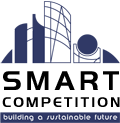Buildings generate nearly 40% of the world’s CO2 emissions—and since two-thirds of the buildings that exist today will still be around by the middle of the century, architects need to rethink their design now to have a chance of meeting goals for a net-zero economy. The industry is shifting, and sustainability has become a standard part of architecture. But some projects go further than others.
Each year, the American Institute of Architecture Committee on the Environment selects the 10 best designs.
Three award winning examples are:
- The Austin, Texas Central Library, a LEED Platinum facility, designed by Lake|Flato Architects in San Antonio. One of the key features of the library is a 373,000-gallon rainwater harvesting system and a garden designed to attract pollinators on the rooftop. (https://www.aia.org/showcases/6280244-austin-central-library)
- The Environmental Nature Center and Preschool in Newport Beach, California. The facility was designed by LPA, Inc., an Irvine, California headquartered architecture firm. The Center was the first LEED Platinum certified building in Orange County and was designed to be a net zero facility. (https://www.aia.org/showcases/6280251-environmental-nature-center-and-preschool)
- The Etsy headquarters in New York City. The facility was designed by Gensler, a global architecture firm. The building was designed to reflect the surrounding community needs and attitudes. The company chose to use creativity and imagination to redesign a turn-of-the-century building and convert it into a showcase for business and governmental leaders to use as an example for future redevelopment purposes. (https://www.aia.org/showcases/6280254-etsy-headquarters)
For more information, visit the American Institute of Architects site, www.aia.org
edited contribution by Adele Peters for Fast Company magazine


